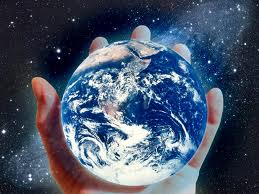 For several years I’ve been inspired and guided by an admittedly idealistic vision of future technology in the study of dreams:
For several years I’ve been inspired and guided by an admittedly idealistic vision of future technology in the study of dreams:
One day, everyone in the world will have an easy and private way to enter their dreams into a collective database we can all access and study.
If that were possible, if such a massive database existed, we could learn so much not only about dreams but also about consciousness, culture, and the evolution of our species. The work I’ve been doing to develop the Sleep and Dream Database (SDDb) has aimed at laying some initial scientific foundations for the day when this vision of a universal dream portal and archive becomes a reality.
Recently I’ve become involved as an advisor with SHADOW, a company founded by Hunter Lee Soik to develop an iOS app for recording dreams and exploring their meanings. Working with SHADOW has made it clear that the technology for creating a universal dream database is emerging very quickly.
That’s a good thing, right?
In light of recent news about governmental and corporate abuses of data mining, it might seem a risky proposition to share one’s dreams in an online forum. If dreams are as valuable and meaningful as researchers like me say they are, perhaps people should be more, not less, cautious about entering them into a public database. The intimate personal details of dreams make people naturally reluctant to share them in any kind of setting where they don’t feel a high degree of trust and safety.
In developing the SDDb and working with SHADOW I’ve tried to respond to these concerns by emphasizing 1) the practical measures we can take to protect people’s privacy and 2) the benefits of becoming a participant in a large-scale database.
Regarding privacy, the participants can set the standard by altering or removing any personally identifying details (like the names of people and places) in their dream reports. Participants can also exclude any content they simply don’t feel comfortable sharing. I encourage people to be as forthcoming as possible, but I always let them know it’s their decision about how much to share.
Although these editorial revisions add a little noise to the system, they can greatly diminish the chances that someone who wants to remain anonymous could be identified by his or her dreams.
Additionally, the host of the database should do his or her best to insure the privacy of its users, the security of their identifying information, and free access to their own data, which they may retrieve and remove from the database at any time. The SDDb does that, and Shadow has promised to do so, too.
It’s important to offer the choice of opting out for participants who want to use the analytic tools of the database but don’t want to share their dreams publicly. That’s the maximal position on privacy, and of course it would shrivel the database to utter uselessness if everyone adopted it. Before people opt out I ask them to consider the idea that to benefit from the commons, you need to contribute to the commons. The database will be more accurate and useful for you and for all other participants if you add your voice to the collection.
If privacy protection is taken as the shared responsibility of both the participant and the database host, the risks don’t disappear, but they shrink down to a size that makes it possible to balance them with the upside potentials.
These potentials start with a huge magnification of self-awareness for the participants, who gain an unprecedented ability to see how their individual dream patterns compare to the large-scale patterns of other groups of people. Nothing like this has ever existed, but once it does I believe many people will be drawn to it as a unique and compelling source of self-knowledge.
The benefits will extend beyond personal insights. A dream database of the scale we’re discussing could serve as a kind of social barometer, measuring collective reactions to collective events. We already know that people dream vividly in reaction to turbulent social conditions of war, elections, natural disasters, terrorist attacks, and celebrity deaths. A large and sophisticated database could allow us to observe in real time the emotional impact of these and other public events on people’s dreams.
Beyond that, it would give us a new appreciation for the astonishing complexity of the human race and the wide variations in how people live. For example, it would show us that vast numbers of people in the modern world are living in conditions of desperate suffering. A truly universal database of dreams would be overflowing with nightmares of poverty, trauma, neglect, and abuse. More widespread awareness of what it’s like to experience such harrowing dreams might be a potent lever for promoting positive social change.
This database of the future might also give us a new appreciation for the “ordinary mystics” among us, people whose unusual dreams connect them with hyper-creative dimensions of the imagination. As a psychologist of religion I’ve always been struck by the parallels between mystical experiences in religious history and certain types of dreams that contemporary people have, dreams of magic and mystery and esoteric symbolism. My sense is that more people have these kinds of dreams than is commonly recognized. A large-scale database could open our eyes to the surprising prevalence of mystical dream phenomena among the general population.
The potential risks of these technologies are real, but so are the potential benefits. The risks are limited and manageable; the benefits could be world-changing.
